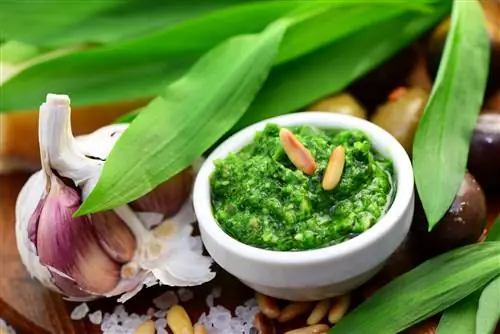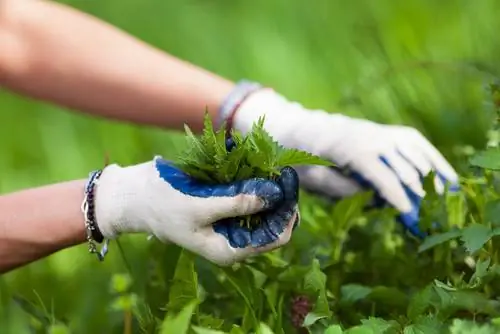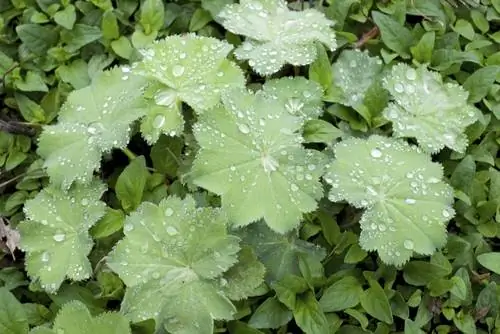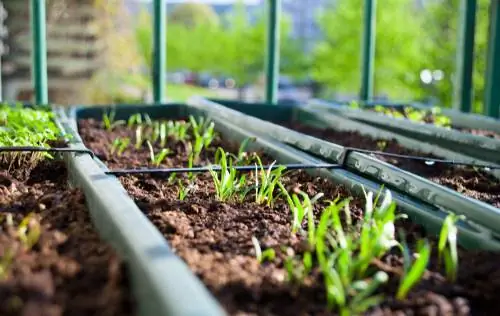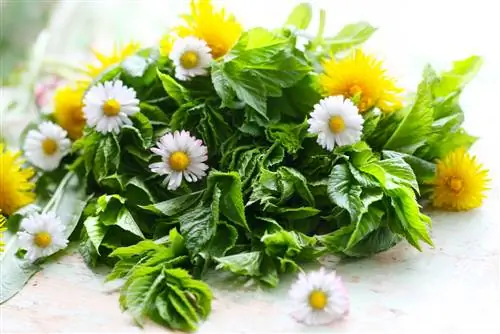- Author admin [email protected].
- Public 2023-12-16 16:46.
- Last modified 2025-01-23 11:21.
Wild herbs and fermentation. Both are in demand again in today's nutrition-conscious times. And luckily they can also be combined well. While the herbs provide valuable ingredients in the spring, fermentation makes them last for a long time. But how does it work?

How can you ferment wild herbs?
To ferment wild herbs, wash and cut the herbs, layer them in a fermentation pot with s alt, tamp each layer firmly, possibly inoculate with sauerkraut juice and weigh down the mixture. After a few days or weeks of fermentation, the herbs are stable and can be eaten.
What is fermentation?
During fermentation, harmless bacterial or fungal cultures trigger a fermentation process. The vegetables change, but they remain or even become a little he althier. This usually creates an acid that ensures a long shelf life. Edible wild herbs can also be fermented. This closes the supply gap during the cold season.
Appropriate container and vaccination
A fermentation pot with a lid, like the one used for making sauerkraut, is also ideal for fermenting wild herbs. Furthermore, the contents are “inoculated” with fresh sauerkraut juice. But that is not absolutely necessary. The herbal mixture will also start to ferment on its own at some point, as some of the beneficial bacteria and fungi are always involved.
S alt as an additional ingredient
Rock s alt is a common ingredient in making fermented vegetables, but is not a requirement. However, it offers convincing advantages, even with wild herbs.
- it keeps the herbs crunchy
- allows the fermentation process to proceed more gently
- adds its own flavor
Suitable wild herbs
All types of wild herbs can be fermented. It is interesting to combine different types. But be careful: only use wild herbs that you know really well, otherwise poisonous wild herbs can easily end up in the fermentation pot.
Collecting wild herbs is particularly worthwhile in spring. Then many species are ready to give us their gifts. A lot is also needed to completely fill the fermentation pot.
Herbs from the garden
Cultivated garden herbs such as parsley can also be added to the pot. Garlic adds an interesting flavor note. If you look closely you can also discover wild herbs in the garden that have settled there all by themselves.
What should you pay attention to?
Wild herbs are collected primarily because of their he althy and often healing ingredients. However, if they come from unsuitable places, harmful substances can stick to them.
- use unsprayed wild herbs
- do not pick close to cultivated fields
- Avoid near busy roads
This is how wild herbs are fermented
- Wash wild herbs thoroughly
- then cut everything into small pieces
- Place a 4 cm high layer in the fermentation pot
- add some s alt
- fill it up layer by layer
- Mamp each layer thoroughly beforehand
- vaccinate with sauerkraut
- weigh down with a clean stone
- Keep container warm
After the fermentation process is complete, the wild herbs can be eaten. This usually happens after a few days or weeks.
Tip
If the herbs are not completely covered by liquid, you can add some spring water.


